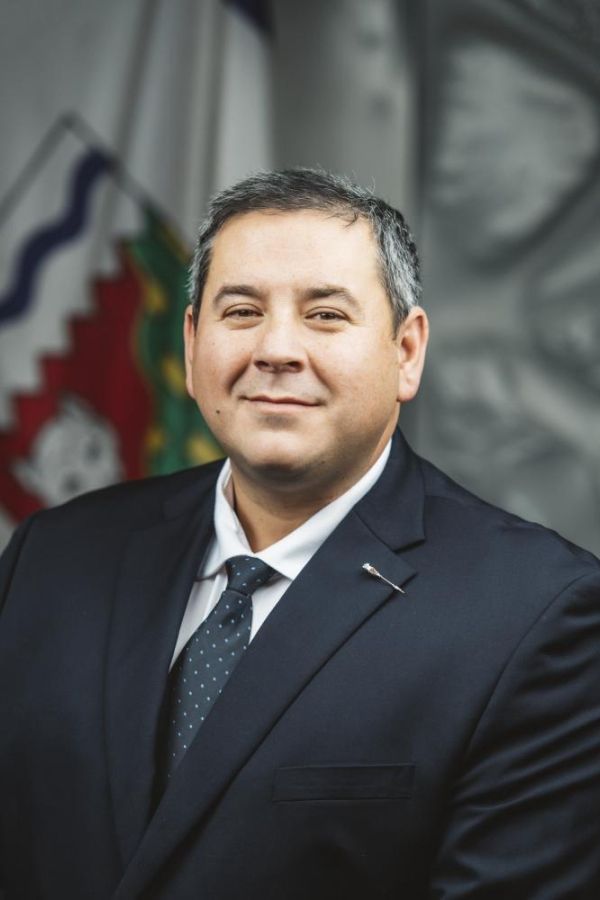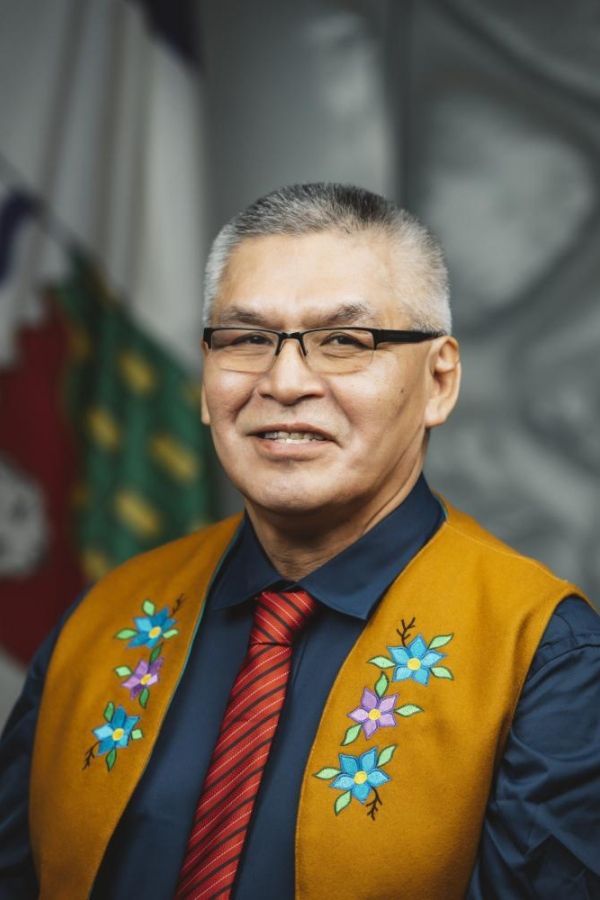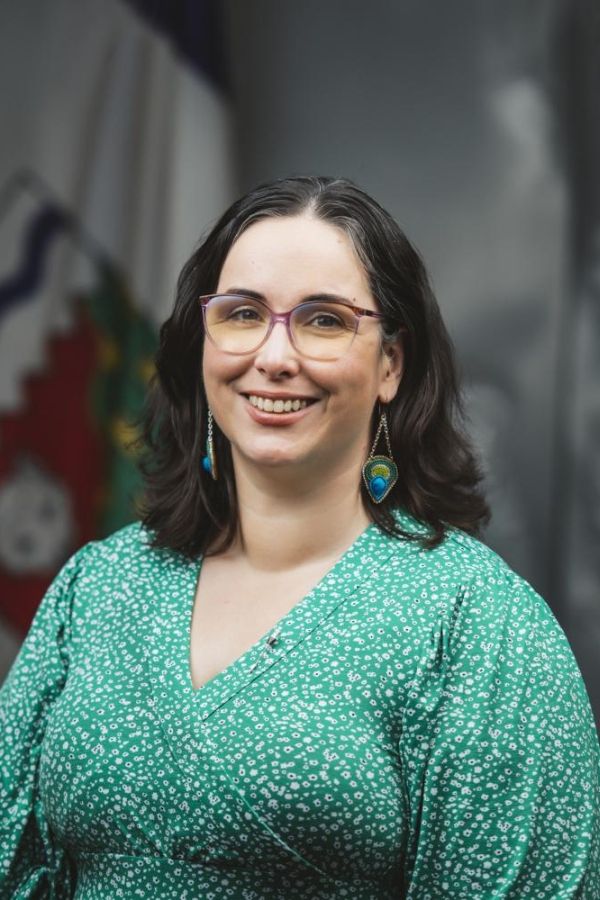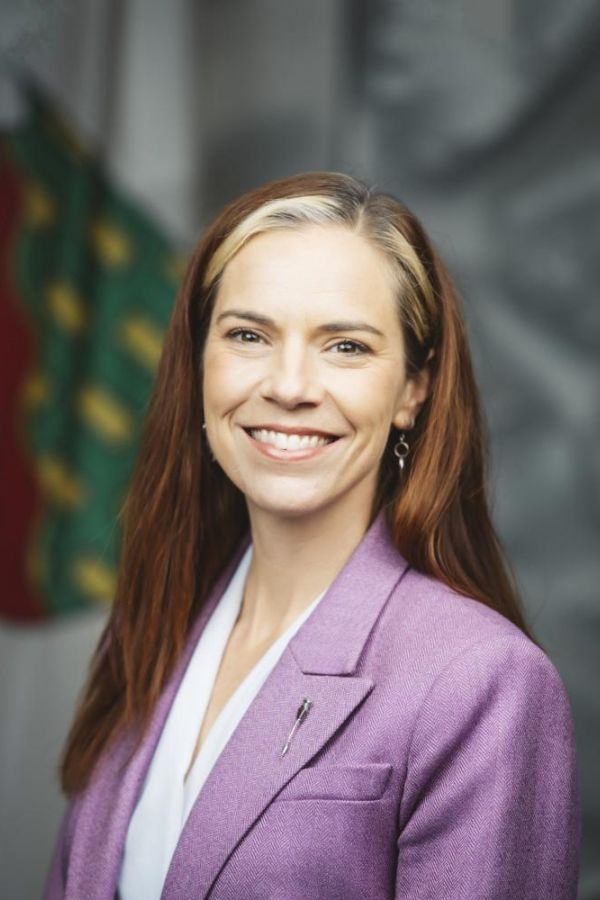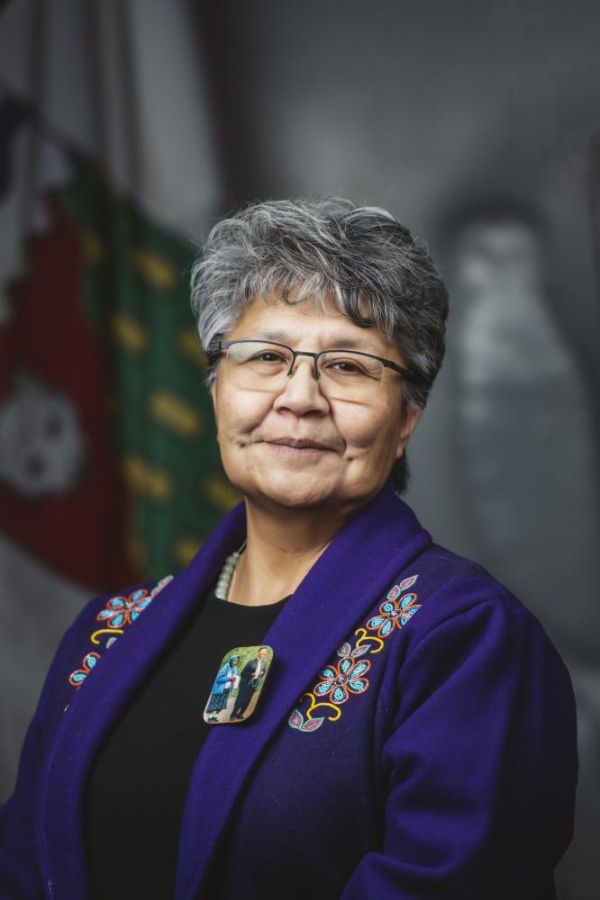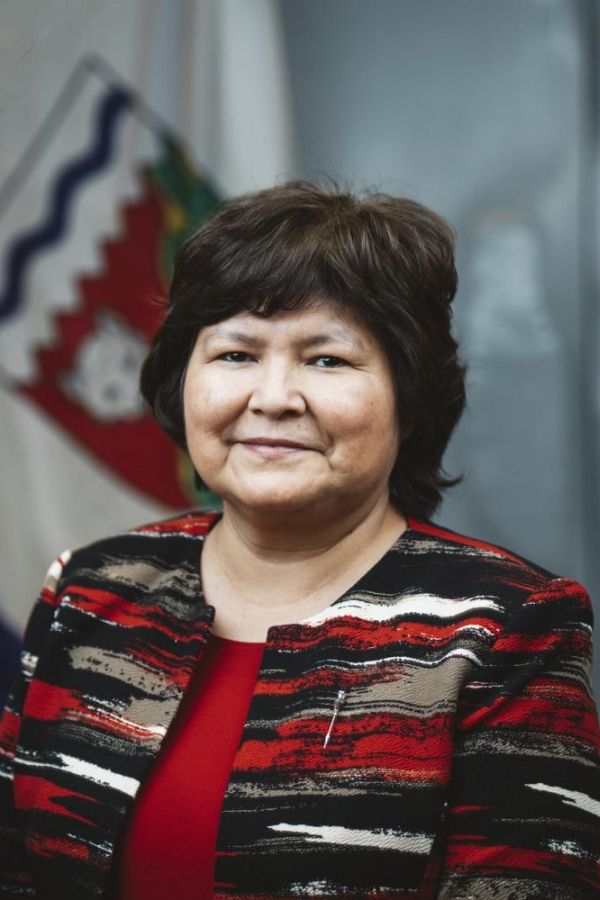Debates of May 29, 2024 (day 18)
Question.
Question has been called. All in favour? Opposed? Abstentions? Motion has passed.
Carried
Reports of standing and special committees. Tabling of documents. Notices of motion. Motions. Notices of motion for the first reading of bills. First reading of bills. Second reading of bills.
Consideration in Committee of the Whole of Bills and Other Matters
I'll call committee to order. What is the wish of the committee? I'll go to the Member from Inuvik Boot Lake.
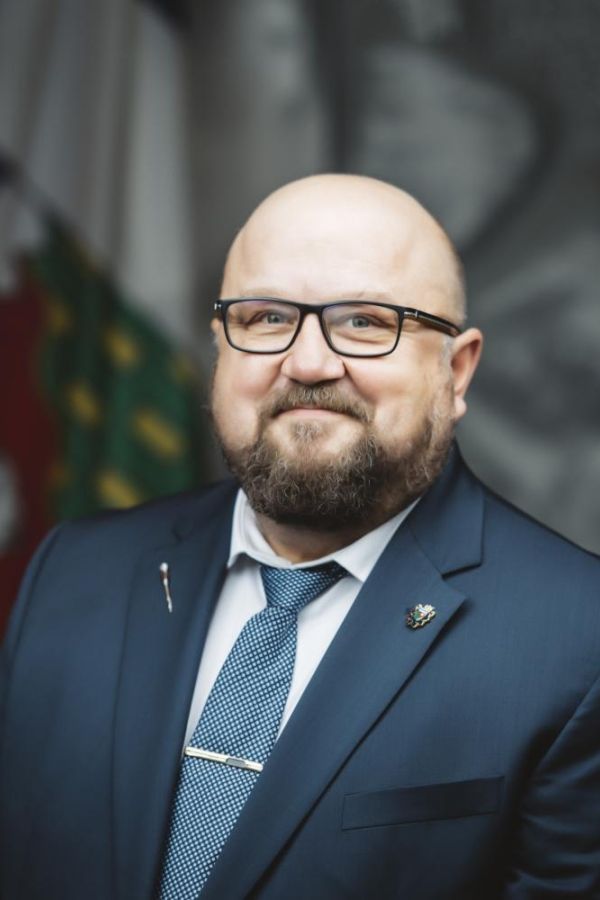
Thank you, Mr. Chair. Mr. Chair, the committee would like to consider Tabled Document number 09320(1) tabled on May 24th, 2024, and with the departments of EIA, Justice, and Health and Social Services for consideration.
Thank you. Does the committee agree?
Agreed.
Thank you. We'll proceed with the first item. Committee, we have agreed to consider Tabled Document 9320(1), Main Estimates 20242025. We will now consider the Department of Executive and Indigenous Affairs.
Minister of Executive and Indigenous Affairs, please proceed with your opening remarks.

Thank you, Mr. Chair. I'm here to present the Department of Executive and Indigenous Affairs' main estimates for the fiscal year 20242025. Overall, the department's estimates propose an increase of $1.405 million, or 6.1 percent, over the Main Estimates 20232024. These estimates support the mandate objectives, while continuing to meet the Government of the Northwest Territories' fiscal objectives to prioritize responsible and strategic spending.
Highlights of the proposed estimates include:
Transfer of Integrated Service Delivery Program of $854,000 from Department of Justice;.
Continuation of the implementation of the national action plan to end genderbased violence funding of $2,187,000;
Women in Leadership $101,000; and.
Fiscal sustainability reductions of $838,000.
These estimates support the mandate objectives for the Department while continuing to meet the GNWT fiscal sustainability strategy objectives to ensure the fiscal health and financial future of the GNWT. This concludes my opening remarks. Thank you.
Thank you. Does the Minister of the Executive and Indigenous Affairs wish to bring a witness into the House?

Yes, I do.
Does the committee agree?
Agreed.
Thank you. Sergeantatarms, please escort the witness into the Chamber.
Would the Minister introduce his witnesses.

Thank you. With me, I have John MacDonald, the deputy minister of Executive and Indigenous Affairs; and, Tram Do, director, shared corporate services, with the Department of Executive and Indigenous Affairs. Thank you.
Thank you. I will now open the floor for general comments on the Department of executive and Indigenous affairs. Do any Members have general comments? Seeing no more general comments, does the committee agree to proceed? Oh, I'm sorry, I'm going to go to the Member from Yellowknife North.

Thank you, Mr. Chair. So I just wanted to start in my general comments by pointing out some of the important actions contained in the Homelessness Strategy, which is now going to be led by Executive and Indigenous Affairs. And I know that there's many actions identified in the business plans around coordinating efforts. And certainly it's not all about the money. It's partly about policies and coordination around homelessness. But I just wanted to emphasize here that it's also about the money when it comes to combatting homelessness. So I wanted to go over some of the specific recommendations in the Homelessness Strategy that was released at the very end of the last Assembly, and my hope was that it would really be carried forward into this Assembly and looked at carefully and implemented carefully. So I wanted to go over some of the recommendations there that do require additional funding.
One of the recommendations was around increasing transitional housing and supportive housing. So we need to actually increase the number of facilities that we have to meet the goals that we're setting up around functional zero homelessness in each community. And the strategy talks about first determining the need and feasibility for supportive living facilities and then increasing GNWT funding available for those programs to improve communitydriven solutions.
Another recommendation was around ensuring shelter services have appropriate resources that actually reflect the needs of those users. And so one step is to first establish standards for shelters, but then also ensuring there's adequate money there to meet those standards. And I know certainly the nonprofits in Yellowknife have to make ends meet with sort of shoestring budgets and, you know, very few staff that they can afford to pay for and sometimes you know, to meet shelter standards, we should really be increasing staffing ratios and just increasing the resources that we're providing in order to make sure that those shelter environments are safe, both for users and for staff.
Another recommendation was around establishing longterm funding options to improve the sustainability of those nonprofits that are operating shelters.
Another recommendation in the Homelessness Strategy that needs to be implemented is to add additional navigator positions. So the integrated case management program has been a pilot for quite a few years, and it's been shown to be successful, but we've been slow actually expanding those services outside of Yellowknife. And the strategy really recommends doing that, and we don't currently see resources allocated to that.
It also recommends creating peer support roles for those service users, those people accessing shelters who would benefit from having those supports and mentoring from fellow community members but perhaps don't need the intensive supports that a navigator would provide.
So those are just a few of the recommendations that do require actual resources that I wanted to get that out there before we start because I think it's easy to say that we're looking at the strategy because we're going to coordinate, but I think we also need to see the money.
I also wanted to reemphasize again that we another key initiative of the Department of EIA that's outlined in the business plan under, you know, the main departmental highlights, is around stabilizing nonprofits and helping to sustain them.
So, again, I just wanted to highlight that we should actually be looking at the recommendations of the report that came out in the last Assembly called Strengthening the Nonprofit and Charitable Sector. There was an external advisory committee that provided some really important recommendations that need to be implemented. And, again, we don't see real numbers and funding in this budget to make that happen.
Finally, in terms of my general comments, I just wanted to comment on the role of communications. We see a large budget under EIA for corporate communications as well as Cabinet communications. And according to my calculations, those two together add up to about $2.7 million and out of the total EIA budget, which is about $24 million, that's about 11 percent of the budget, which is significant, especially for a department that is doing some really important has some really important roles there. So to have 11 percent of the budget taken up by communications, I think we need to think about that.
So my understanding was that after devolution, communications budgets within Executive and Indigenous Affairs started to go up significantly because there was a desire to centralize communications more within the Executive and Indigenous Affairs department. And so that resulted in additional communications positions being established within corporate communications after devolution. And I think perhaps the intention, or the thought behind it, was to similarly take away some communications positions within each of the departments, but I'm not sure that that has actually happened. So what we've seen is a general growth of communications staff everywhere. And many GNWT staff have expressed their frustrations to me that they feel there's an imbalance that's developed. Perhaps too much emphasis and control over how staff can communicate with each other and with the public due to all of these communications staff, but not enough emphasis on developing the quality content in those communications and supporting staff to actually develop the content that is actually helpful and responsive to public needs. So I just wanted to offer that general reflection on the role of corporate communications. And I'll delve a little bit more into it when we go through the line by line. Thank you, Mr. Chair.
Thank you. Does the Minister want to respond? Okay, we'll just continue on. Is there any other Members that want to add general comments? I'm going to go to the Member from Range Lake.

Thank you, Mr. Chair. Mr. Chair, I think that this is an odd Minister or department to kind of look at because it's very much a political department, and it houses the Premier and Cabinet Minister offices, and then a bunch of kind of not really statutory but, like, things that don't really fit in anywhere else. So I appreciate and Indigenous relations, which, of course, is crucial to how things operate. So it's very much it is an executive department.
But one thing I think is missing is more of a focus on that executive function. The business plans and the budget as well and how the department's structured set Executive and Indigenous Affairs up to be a coordinating body. And I think it needs to be more than that. I think it needs to be the central body that sends direction throughout the public service and to other departments as well. And although that is you know, that is it's somewhat of a function, I still feel that it's more of an emphasis on coordination than direction. And one thing we're missing is to have a dedicated unit within this department to ensure results and delivery.
And I've spoken about this before. I still feel quite strongly that this is this would be an innovative function of executive that would greatly improve how we get the mandate and business plans implemented, completed, and developed in a meaningful and timely way and give support to that function as well to ensure we're not just collating departmental actions into one document but we're producing a plan with one vision with unity, with purpose, and that that's getting and that departments are on track to deliver on that, because at the end of the day, if we are setting political goals here we want to be we want to ensure that they get delivered on the ground and in our communities in particular, and we don't really have a mechanism to do that other than the individual Ministers who are then kind of working collaboratively. And that's fine, but as I've said before, we don't have that much time to be successful. Four years goes by very quickly. So the more tools we can give to the Cabinet to be successful, I think we'll get better results. And I think centralizing more of that authority within the Premier's office, in Executive and Indigenous Affairs, is the right step to take. And honestly, I think we could even consider moving the financial management board here as well and for them to play more of a centralized corporate function under the direction and supervision of the Secretariat to Cabinet and the Premier as well. Finance can still set fiscal policy but those kind of corporate controls, guidance around stat like, Crown corporations and divisions and contribution policies and ensuring, most importantly, that departments are sticking to their budgets and being audited correctly and all the things we look at in public accounts as being conducted.
So, yeah, I none of that's in here beyond what they already do. I just think there could be more strength put towards these kind of core functions and give the Premier more of an ability to be the Premier. Because regardless of how the position actually functions, the expectations from, I think, this House and the public, is that the Premier has more of a leadership role to play than just chair meetings and being a spokesperson for government. So I would very much like to see that in budgets going forward as things are refined.
I also think the homelessness should probably be handed off to the housing minister rather than stay here. I appreciate that there's many facets to this, but there's many facets to lots of areas of public policy. You know, like, if we're talking about crime reduction and crime reduction, we have to talk about drugs and addiction, especially in the Northwest Territories. Like, you can't you know, we wouldn't say let's move to the Premier's office because it's multifacetted. We could do that for everything and only have one Minister because everything touches on everything. So I think homelessness I appreciate the Premier's predecessor took a vested interest in being hands on on this file and that's, I think, why the move was made, but I think we have a Minister of housing who's very could be very competently take on this responsibility and provide more focus and dedication to implementing it because, of course, the Premier has a lot on his plate. So I would recommend moving that function elsewhere.
And, yeah, I think and I think the focus on Indigenous working with Indigenous governments, we heard today from the Member for Monfwi that that is bearing fruit, from her perspective, and we've heard that from others as well. And that's good that we're on the right foot and we're moving forward in that direction. But I think the other big piece is land rights agreements and implementing modern treaties. And that means shaking up how we do business in the negotiation sections or negotiation divisions of Indigenous Affairs. We waited a very long time. People are still waiting. And all that uncertainty and doubt that is created from not having stability with respect to Indigenous rights in the Northwest Territories is something that really needs to be corrected. So I hope that this is more than just keeping the negotiation tables the lights on in the negotiation rooms but actually bringing forward new innovative ideas and mandates to see success at those tables and to work effectively with the federal and Indigenous partners to complete modern treaties and land claim negotiations by the end of this term. Thank you.
Thank you for your general comments. The next Member I have on my list here now is the Member from the Sahtu. 43ds

Thank you, Mr. Chair. My comments here is to the Department of EIA. Taking a lead role in representing this institution or this mandate or this government outside of this government in building relations, I totally agree with the mandate to engage in a number of ways, including building trust and relationships with the other land title organizations out there. For a number of reasons, we have the conventions allowing you to do so. And I see a need for improvement, and I'm quite satisfied with the business plan to resolve those and expedite solutions in particular. The only government authority we have in 33 communities is the Deline Got'ine government. So when I go there for my visit, I see huge potential and I see huge growth in a number of areas, including child development in the local schools. And adding to their growth, because of the status of selfgovernment which allows them to approach both levels of government, both the territorial government and the federal government. In some other areas, whether it's settled claim area, and over 60 percent of our territory is in settlement title. And the unsettled areas seem to be further behind than the showcase of growth given to the powers underneath selfgovernment status to Deline, the Deline Got'ine government. So therefore, the other candidate within the Sahtu is Colville Lake. There's a few organizations that have signed AIPs, and if we can have control of the growth that could be expedited for the conclusion of selfgovernment agreements within this mandate, I think it's a good fit to have the Premier taking a role and addressing leadership in those communities to accomplish what we've seen already that has a proven track record and the accomplishments by the Deline Got'ine government.
So the Deline Got'ine government has set a model for community development growth, jurisdictional growth, and future growth within their capacity utilizing their strengths given to them by their status. So if it's such a good model and from what I see the business plan is going to help us get there, so we got three and a half years to get there. As I always said in the private sector, somebody has a legal the aggression to conclude your goals and objectives. In this case, it's our mandate.
And when I review the business plan, I can only imagine there would be results within three and a half years, or even sooner in some of those cases, because the next candidate that I know of that is very close to concluding the selfgovernment status is Colville Lake. So if we achieve success in that conclusion of 90 percent, we only got 10 percent left. So I think with the proper leadership underneath this department, we can accomplish that 20 percent remaining in our term of this Assembly. And they would be the next candidate to capitalize on independence and growth as did the Deline Got'ine government.
So I raise those points there to help emphasize the interpretation of what I see within this business plan to cover the term of this Assembly so that we can have outcomes 36 months from now. That's all I got for this chapter there. Thank you, Mr. Chair.
Thank you for your general comments. Next on the list I have is Member from Inuvik Boot Lake.

Thank you, Mr. Chair. Yeah, general comments, I mean, you know, when I look through the business plan for EIA, I look specifically at the directorate as the Indigenous Intergovernmental Affairs and the Executive Council offices and, you know, there's much work to be done. And I'm appreciative of the work that's been done to date with working with Indigenous governments. I appreciate that the Premier and Cabinet continue that mantra, and I think it's great. But it's important to know that there's much work being done by the Indigenous governments, and there's much work to be done. And, you know, they have been and particularly this and I can speak to my region, of course. Particularly in my region with our two settled land claims, they are essentially going gunsablazing. They're building homes. They're doing major infrastructure projects. They're moving ahead. So, you know, so when I look at our responsibility as EIA and to continue to do the work that the Premier's committed to doing, and has shown that is committed to doing, we need to make sure we have the right people in those places. You know, it all can't be based in Yellowknife. We need senior people, whether that's regional directors or whether that's ADMs, you know, we need people in the regions where this work is taking place by the Indigenous governments to be our voice there as well. And when I say our voice, this government's voice. And I think that it's not only the perception that things are centralized, it's not only that you know, it's important that we have people in the regions where that work's being done to be able liaise, again, with the Executive Council offices and making sure that work being done and voices are being heard from the Indigenous governments. And then, of course, that also ties into the departments in the regions as well because, I mean, those positions, again, having someone in there that can tie together, whether it's housing and health and social services and infrastructure and tie them together in the regions as a onestop place you can go if you're an Indigenous government or even if you're just an individual in that region. So I think it's key, and I would hope that that is what's being looked at when I look to the business plan to make sure that there are staff in those positions and that we have, you know, reliable, senior people in the communities working with EIA. Thank you, Mr. Chair.
Thank you. Any further Members that want to add to general comments? Okay, I don't see anybody else putting their hand up. I'll continue on.
Seeing no more general comments, does the committee agree to proceed to the details contained in the tabled documents?
Agreed.
Thank you. We have committee agree. Committee, we will defer the department summary and review the estimates by activity summary, beginning with Cabinet support starting on page 127 with information items on page 129. Are there any questions? Page 129. Okay, I'm going to go to the Member from Frame Lake.
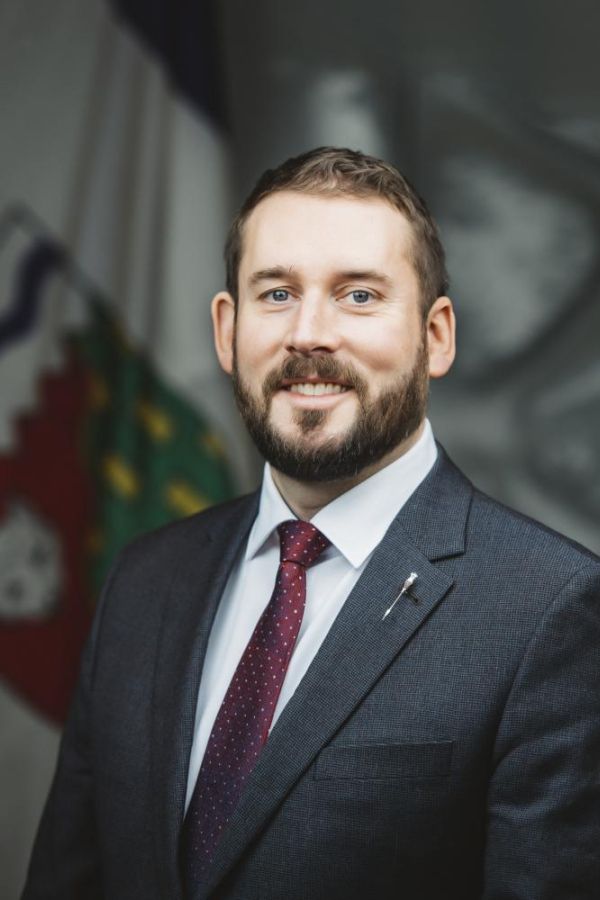
Thank you, Mr. Chair. Just wondering why we're not starting on page, I believe, 123?
Thank you. Go back to the Member. Before we'll go back to that item once we get through the key items. Right now we're going to start off on page 127 with information on page 129. Go back to the Member from

Thank you, Mr. Chair, appreciate that clarification, okay. So my first question is actually just related to the business plan, and I think this is the appropriate place to ask the question, page 72 of the business plan. I know it was mentioned in the speech by the AOC chair there, but I just wanted to kind of express my support for having the strengthening the NGO and charitable sector report included and spoken to in the business plan. I would like to see us prioritize implementation of that report, cost out implementation of the report. So I'm just wondering if the Premier can respond to that.
Thank you. I'll go to the Minister.

Thank you very much. The NGO sector is more part of EIA than ever given that EIA is now responsible for integrated service delivery. With that comes the homelessness file. The reason that integrated services and homelessness is in EIA is because when it was in Justice, and I was the justice Minister, I found that the Minister had no authority to actually integrate services, that the program with integrated case management was just a program of the Department of Justice. And so to the comments earlier about why homelessness is in EIA, it is beside integrating service as the approach we're taking is we start we're starting with one issue as opposed to trying to do everything all at once. And so, of course, with that comes a lot of work with NGOs. And so that is going to be core to the work that we do over the next four years. I've had or three and a half years. I've had conversations with the deputy minister already about approaches to ensuring that our NGO partners do have the stability they need to address their files. Maybe I can hand it to the deputy minister for some comments on this because it is an area that we have discussed at length. Thank you chair.
Thank you, Mr. Chair. As the Premier said, we are very aware that the NGO sector needs support. Previously, the Member spoke about the report that was completed in the last government. We have that in hand, and we're looking at that actively and certainly through the lens of integrated service delivery and addressing the Homelessness Strategy. We're looking at ways in which we can support NGOs, particularly in that subgroup, but also the NGO sector at large.
One of the things that we're looking to do initially is to look at how we can break down some longstanding barriers, particularly when it comes to homelessness, information sharing, things of that nature, and trying to improve how some of the coordinated access moves forward. So we see that as a real precondition to being able to actually get to the real work of supporting our shared clients. Thank you, Mr. Chair.
Thank you. I want to go back to the Member from Frame Lake.

Thank you, Mr. Chair. So my next comment, question, is, again, related to an item in the business plan, page 83. There's some discussion there on focusing on crime prevention. And this is going to relate back to comments that I have on Justice as well, but I'd like to speak to it here also. I just note the lack of targets under this business plan item. And I do think that this is very closely related with Justice. And I like that they are looking to identify barriers to service, address root causes of crime, certainly focusing on crime prevention through collaborative efforts at early intervention, but I would just note that the lack of targets attached to this goal makes me think that the department still has some work to do in terms of identifying what it is they're trying to accomplish here. So I would appreciate some commentary on this and maybe some maybe targets are coming, but yeah, if the Premier or the department could comment on that one. Thanks.
Okay. Thank you, I'll move it over to the Minister of EIA.

Thank you, Mr. Speaker. I apologize, I was just getting my business plan sent over to me. If the Member could repeat the item he was referencing. Thank you. I apologize.
I'll go to the Member from Frame Lake.

Thank you, Mr. Chair. It's page 83 of the business plan. The item is focus on crime prevention, identify barriers. I'll just note that there's no targets attached to that business plan item. And, yeah, the comment was, you know, if we don't have targets identified, it's a bit hard to tell kind of what the government is trying to achieve there. So I just wanted the Minister or department to kind of expand upon when they're looking to achieve here. And I would just emphasize that I think this is an important one and is closely tied to some of the goals that Justice has set. Thanks.
Thank you. I'm going to go to the Minister of EIA.

Thank you, Mr. Chair. And I appreciate the Member's concerns about the lack of target. This document and the mandate were prepared almost simultaneously and so we were including items underneath each of the topics, and they aren't necessarily all fully fleshed out yet. But the idea behind this here is around integrating the services and ensuring that someone who needs access to services is able to get those services when they need them. Often, the root cause of a lot of crime is addictions issues, and so if we can support people in a way that will actually assist them, you know, get them out of that lifestyle or the criminal justice system, then that is what we want to do. So there's no targets here right now. I'm happy to work with the Members to develop some targets. But that's where we're coming from with this. Thanks.
Thank you. I'm going to go to the Member from Frame Lake.

Thank you, Mr. Chair. Yeah no, I appreciate that. And I would just kind of encourage the department to continue to work towards better defining what it is they're looking to achieve here and would emphasize that, you know, if our focus is going to be on crime prevention, you know, like I said yesterday in my kind of higher level comments, you know, there's a lot to it that does not involve simply policing, work that's done in the jails. Most of it takes place the work that really makes a difference takes place long before people enter the criminal justice system. So I'm excited to see this in here but want to see the targets the department is working towards. I hope it's focused and that the targets we're looking for are outcomeoriented. So those are my comments on this page for now. Thank you, Mr. Chair.
Thank you. I'm going to go to the Minister from EIA.

Thank you. I appreciate those comments. I look forward to the Members on this. Thanks.
Thank you. I'm going to go back to the Member from Frame Lake.

Thank you. That's all my comments at this time, Mr. Chair, on this page.
Thank you. Any other Members? I got the Member from the Sahtu.

Thank you, Mr. Chair. My question is related to page 80 in the business plan here on UNDRIP. I know we inherited the or this Assembly inherited the last Assembly's legislation on UNDRIP, which I totally agree. If it's a piece of legislation that is going to improve on the rights of Indigenous people, we do, to some extent, have those recognized rights in the Sahtu and other settlement areas. If there's any adding on powers with the existing powers we have from a modern treaty, I would say there's always room for improvement. So when I look at this, and I think of the legislation passed by the last Assembly, maybe the Premier could give us a little explanation on how this department, with your lead, will have achieved targets. Thank you.
Thank you. I want to go to the Minister of EIA.

Thank you. The UNDRIP Implementation Act that was passed in the last government, as the Member said, we are legislatively required to codevelop an action plan to achieve the goals of UNDRIP with Indigenous governments. And so we are in the process of doing that right now. And that will help guide future investments that will be reflected in future budgets. Thank you.







